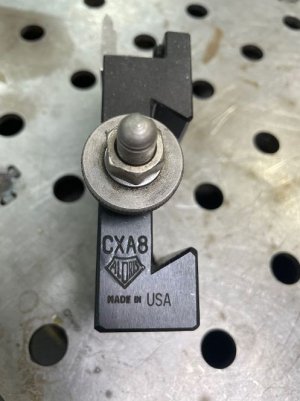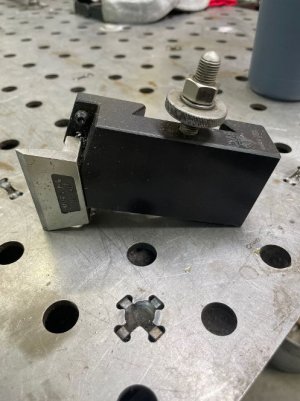- Joined
- Jun 12, 2014
- Messages
- 5,092
If you are seeing it both ways of threading then it sounds like a headstock alignment issue. Technically the the rigidity would increase as you get closer to the headstock so when threading toward the headstock you should get less deflection (deeper cut) the closer you get to the chuck. The other possibility is that the chuck jaws are not holding the piece true to center as you move away from the chuck, so there is a little more wobble the further you get away from the chuck which causes the thread to be slightly deeper the further away from the chuck. I like to use Rollies Dads Method to look at both headstock alignment and also +/- swing the as you mover further away from the chuck. I use a ground precision bar and a 0.0001" dial indicator with a flat tip. Example below, the +/- swing remains the same, there is a few ten thousandths swing as one moves away from the chuck. Then do some light test cuts in say 1.5" aluminum rod and measure diameters with a micrometer.



